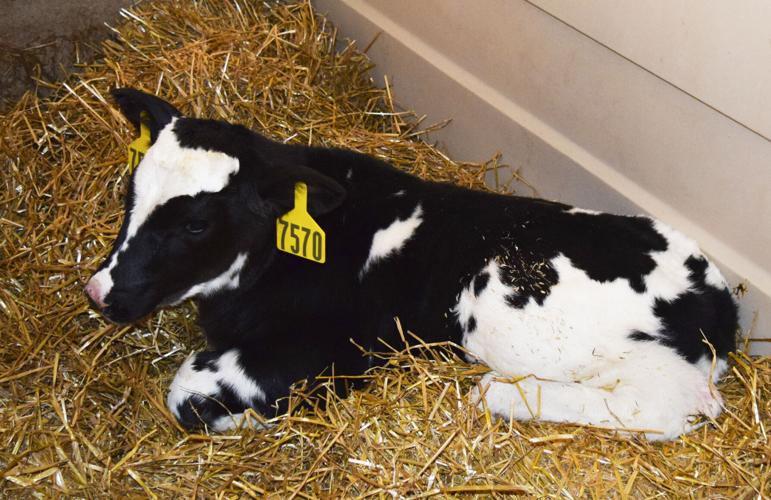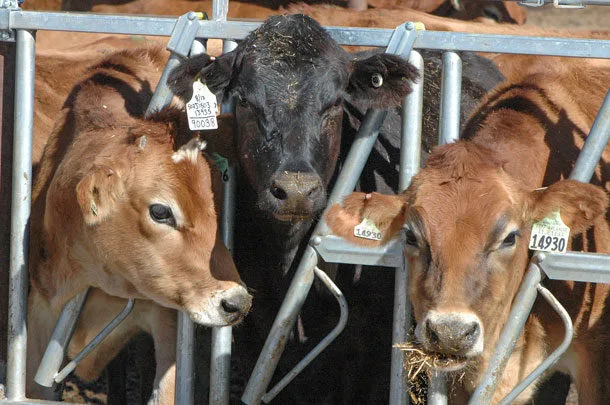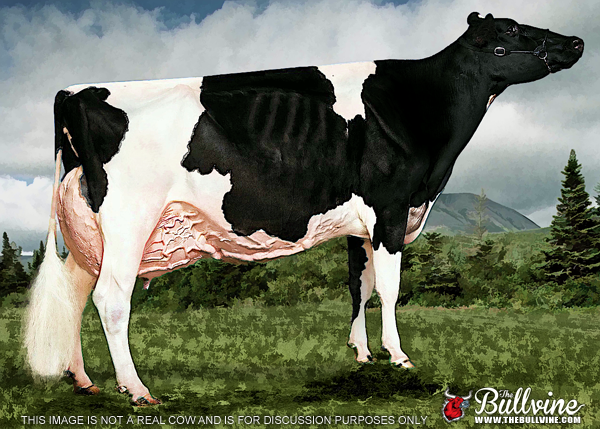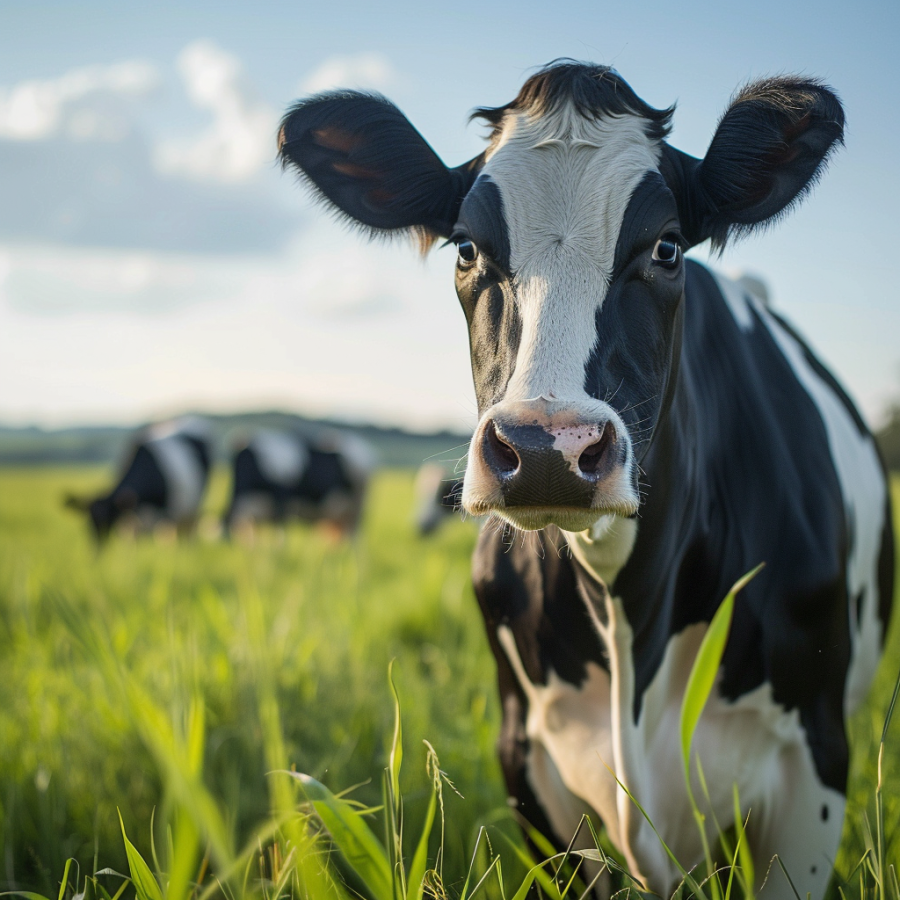Discover how genetic innovations have reversed declining fertility in U.S. Holstein cows. Can improved breeding and management boost both productivity and sustainability?

For years leading up to 2000, U.S. Holsteins grappled with a critical issue. As milk production surged, fertility rates saw a discernible decline. This concerning trend stemmed from the inherently negative correlation between production and fertility in dairy cows. The genetic traits that facilitated increased milk yields also predisposed these cows to diminished reproductive efficiency. As milk production soared, reproductive performance faltered—a biological trade-off rooted in dairy cattle genetics.
The Year 2000 Marked a Significant Turning Point for U.S. Holstein Fertility
The turn of the millennium initiated a pivotal shift in breeding strategies, pivoting towards a more holistic approach emphasizing long-term health and productivity beyond mere milk yields. Previously caught in a downward spiral due to an exclusive focus on production, dairy cow fertility began to experience a much-needed resurgence.
What catalyzed this change? The cornerstone was the broadening of genetic ambitions. Until the turn of the century, breeding initiatives were singularly geared toward maximizing milk production, often at the expense of crucial traits such as fertility. However, starting in the late 1990s, the industry began recognizing the importance of herd longevity and overall fitness.
In particular, 1994 marked a watershed moment by including the ‘Productive Life’ trait in the Net Merit index. This move indirectly promoted better fertility rates through extended productive lifespans. By integrating longevity and its beneficial link to fertility, breeders indirectly enhanced fertility within herds.
The early 2000s heralded the advent of direct fertility metrics in selection indexes. With the introduction of the Daughter Pregnancy Rate (DPR) in 2003, the dynamics of dairy genetics underwent a transformative change. For the first time, dairy producers could target fertility directly without compromising milk production.
These strategic adjustments fostered a balanced approach to genetic selection, resulting in favorable milk yield and fertility trends. This dual focus arrested the decline in fertility and spurred ongoing improvements. It exemplifies the synergistic power of cutting-edge genetic tools and strategic breeding objectives.
DPR Introduction (2003): Impact of Directly Selecting for Cow Fertility
Introducing the Daughter Pregnancy Rate (DPR) into the Net Merit Index 2003 catalyzed a paradigm shift in dairy breeding strategies. By directly targeting cow fertility, dairy producers gained a valuable tool to enhance reproductive performance with precision. This strategic emphasis on fertility bolstered pregnancy rates and significantly advanced herd health and sustainability.
Before DPR’s inclusion, fertility was frequently marginalized in dairy cow breeding, overshadowed by the relentless focus on milk yield. The incorporation of DPR empowered breeders to select bulls whose daughters exhibited superior reproductive efficiency, thereby directly confronting fertility challenges. This resulted in marked gains in pregnancy rates and decreased inseminations required per conception.
Moreover, selecting for DPR extends well beyond fertility improvement; it enhances herd longevity. Cows with higher conception rates typically experience fewer health issues, leading to extended productive lifespans. This improves animal welfare and translates into substantial economic advantages for dairy producers, such as decreased veterinary expenses, reduced involuntary culling rates, and streamlined herd management.
Environmental gains are also significant. Increased fertility and prolonged productive lifespans of cows mean fewer resources are needed to sustain the herd, thereby decreasing the environmental footprint of dairy farming. Enhanced pregnancy rates are critical in lowering greenhouse gas (GHG) emissions, leading to more sustainable dairy production practices.
Integrating the Daughter Pregnancy Rate within the Net Merit index has redefined the dairy cattle breeding landscape. Dairy producers have successfully pursued holistic and sustainable genetic progress by balancing fertility with production traits. This strategic evolution highlights the essential nature of a comprehensive breeding approach—one that equally prioritizes production efficiency, animal health, and environmental responsibility.
National Database Contributions: Establishment of Sire, Cow, and Heifer Conception Rates (2006 and 2009)
When the Council on Dairy Cattle Breeding (CDCB) introduced the national cooperator database, it marked a seminal development in dairy genetic evaluation. Initiated between 2006 and 2009, this comprehensive database encompassed vital traits such as Sire Conception Rate, Cow Conception Rate, and Heifer Conception Rate. By leveraging millions of phenotypic records, the database enabled more nuanced and precise genetic evaluations, refining the selection process for enhanced fertility. This pivotal innovation empowered dairy producers to manage their herds with unprecedented precision, ultimately propelling productivity and sustainability to new heights.
The emphasis on phenotypic data facilitated an exceptional breadth of analysis, unearthing insights previously beyond reach. This treasure trove of data has informed more sophisticated decision-making and laid the groundwork for continuous improvement. Through the evaluation of observed data from millions of dairy cows, breeders have been able to discern patterns and correlations that are instrumental in shaping future breeding strategies. The granularity of these genetic evaluations has translated into tangible, on-farm benefits, optimizing herd performance and driving real-time improvements.
Integrating traits such as Sire Conception Rate, Cow Conception Rate, and Heifer Conception Rate has profound implications. These metrics serve as critical indicators of reproductive efficiency, highlighting areas where improvements are needed and celebrating successes. By monitoring these traits closely, producers can implement targeted management practices to overcome specific bottlenecks in reproduction, thereby enhancing the overall health and productivity of the herd.
The national cooperator database also spotlighted the efficacy of collaborative efforts. With contributions from dairy producers, geneticists, veterinarians, and advisors, the database has evolved into a formidable knowledge repository, driving the evolution of breeding strategies. This collective approach expanded the genetic tools available to producers. It propagated best practices across the industry, ensuring that advancements were comprehensive and widely adopted.
The ripple effects of this initiative are far-reaching. These extensive datasets have facilitated enhanced accuracy in genetic evaluations, leading to the development of more effective breeding programs. Dairy producers are now equipped to breed cows that are not only more productive but also exhibit greater resilience, improved health, and better adaptability to modern dairy farm conditions.
The national cooperator database has been a transformative force in U.S. dairy cattle breeding. It has provided a vital infrastructure supporting ongoing genetic advancements, resulting in higher fertility rates and enhanced overall productivity for cows. This progress is not merely theoretical; it manifests in improvements in dairy operation efficiency, economic profitability, and environmental sustainability. The integration of fertility traits within this framework has set the stage for a future where genetic and management practices coalesce to produce more robust and productive dairy herds.
Evolution of Selection Indexes: How Selection Indexes Define Breeding Goals
Selection indexes have long been integral to cattle breeding by summarizing multiple traits into a single numerical value. This composite score drives genetic progress, ranks animals, and simplifies management decisions for producers. Each trait in the index is weighted according to its genetic contribution toward farm profitability.
- Weighting of Fertility Traits in Net Merit Formula
- In the modern Net Merit formula, fertility traits have been given significant importance. For example, the daughter’s Pregnancy Rate (DPR) is weighted at 5%. Additionally, Cow and Heifer Conception Rates collectively account for 1.7%. These weightings ensure a balanced selection approach that prioritizes both productivity and reproductive efficiency.
- Incorporation of More Health and Fitness Traits
- Over the years, the Net Merit index has evolved to include an array of health and fitness traits beyond fertility. Including traits like cow and heifer livability, disease resistance, and feed efficiency has resulted in a more holistic and sustainable breeding strategy. This balanced approach recognizes that a cow’s overall health and lifespan directly impact her contribution to the farm’s profitability.
Genetics and Management Synergy: Improvement in Dairy Management Practices Alongside Genetic Progress
While genetic tools are the foundation for enhancing cow fertility, the critical influence of progressive dairy management practices cannot be understated. By refining reproduction protocols, adjusting rations, optimizing cow housing, and improving environmental conditions, dairy producers have cultivated an environment conducive to realizing the full potential of genetic improvements.
A tangible testament to this synergy between genetics and management is the notable reduction of insemination attempts required for successful pregnancies. Among U.S. Holsteins, the average number of inseminations per conception has decreased from 2.5 in 2010 to 2.0 in 2020. This trend is similarly reflected in U.S. Jerseys, where breedings per conception have declined from 2.2 to 1.9 during the same timeframe.
This decreased need for insemination underscores dairy operations’ financial savings and efficiency gains, emphasizing the necessity of a comprehensive strategy that integrates advanced genetic insights with meticulous management practices.
Fertility and Stewardship: Impact on Dairy Operation Efficiency and Profitability
Dairy producers are keenly aware of the benefits of improved reproductive practices—fewer days open, quicker return to calving, reduced involuntary culling, and substantial savings in insemination, veterinary care, and other operational expenses. These advances are vital for enhancing operational efficiency. Furthermore, shorter calving intervals and improved reproductive efficiency expedite genetic improvements, leading to permanent and cumulative gains.
Often overlooked, however, are the profound sustainability benefits. Today’s consumers demand responsible production practices, particularly concerning animal welfare and environmental impact. Healthier cows with better fertility exhibit a longer productive life—a critical factor in sustainable dairy operations.
Enhanced reproductive efficiency reduces the need for replacements and lessens resource consumption to maintain herd size, subsequently lowering emissions. For example, improving pregnancy rates significantly diminishes the U.S. dairy greenhouse gas (GHG) footprint; a 10% reduction in herd methane equates to a $49 per cow per year profit increase.
Additionally, reducing the age at first calving in heifers by two months (when bred at optimal weight) cuts the heifer’s carbon footprint by 30%, translating to a $150 saving per heifer.
Sustainability encompasses three crucial dimensions: social, economic, and environmental. Socially, healthier cows mean reduced hormone use and less involuntary culling. Economically, better reproduction results in animal-specific savings and increased profitability. Environmentally, fewer replacements and inputs are necessary, which reduces emissions.
Dairy geneticists, producers, veterinarians, and other industry experts have united to enhance U.S. dairy cow fertility. A persistent focus on improved reproduction is evidently beneficial—it promotes animal welfare, advances dairy farm profitability, and ensures sustainability.
Sustainability Aspects: Social Benefits of Animal Health and Reduced Hormone Usage, Economic Savings and Profitability Enhancements, Environmental Improvements Through Reduced Resources and Emissions
Examining the broader spectrum, enhancing cow fertility is pivotal for sustainability across multiple dimensions. Socially, healthier cows necessitate fewer interventions, minimizing stress and reducing hormone usage. Consequently, the rates of involuntary culling drop significantly. This benefit is advantageous for the cows and enhances herd dynamics, alleviating ethical and practical challenges associated with animal health management.
Economically, the advantages are equally profound. Improved reproductive efficiency translates into cost savings by lowering insemination, veterinary care, and feed expenses. Shorter calving intervals further drive genetic progress, significantly bolstering long-term profitability for dairy operations. Every phase of a fertile cow’s lifecycle is fine-tuned to deliver maximal returns in milk production and breeding outcomes.
Perhaps the most compelling argument for prioritizing fertility improvement lies in its environmental impact. Fertile cows are more resource-efficient, requiring less feed and water to maintain herd size, thus leading to reduced emissions. Enhanced pregnancy rates can markedly decrease U.S. dairy farms’ greenhouse gas (GHG) footprint. For example, boosting pregnancy rates can significantly cut methane emissions, benefiting the environment. Additionally, reducing the age at first calving decreases the environmental footprint associated with heifer rearing.
Advancing fertility in dairy cows yields extensive social, economic, and environmental benefits. By concentrating on these facets, you not only enhance your profitability but also contribute to a more sustainable and ethically responsible dairy industry.
The Bottom Line
It is manifest that the once-prevailing narrative of declining fertility in U.S. Holsteins has been fundamentally altered. Dairy producers have successfully reversed this trend through deliberate modifications in genetic selection protocols and an integrated strategy that merges advanced data analytics with enhanced management methodologies. Presently, the industry witnesses tangible benefits in elevated pregnancy rates and diminished insemination attempts, coupled with significant advancements in sustainability and profitability. This comprehensive emphasis on genetic advancement and bovine welfare delineates an optimistic outlook for dairy farming, evidencing that enhanced production and bolstered fertility are compatible objectives.
Key Takeaways:
- Strategic changes in genetic selection have reversed the decline in U.S. Holstein fertility.
- Advanced data tracking and improved management practices play crucial roles in this positive trend.
- Improved pregnancy rates and fewer insemination attempts reflect the success of these efforts.
- Enhanced fertility in dairy cows contributes significantly to sustainability and farm profitability.
- Holistic genetic progress that includes cow welfare heralds a promising future for dairy farming.
- Increased milk production and improved fertility can coexist successfully.
As you navigate the path toward achieving optimal dairy cow fertility, staying informed about the latest genetic and management advancements is crucial. Implement these strategic changes in your breeding program to improve your herd’s reproductive efficiency and boost profitability and sustainability. Take the step today: consult with your veterinarian or a dairy geneticist to explore how you can incorporate these tools and practices into your operation. Your herd’s future productivity and health depend on it.
Summary:
In the past, U.S. Holsteins experienced a decline in fertility rates while milk production soared due to a negative correlation between production and fertility in dairy cows. Genetic traits that enabled cows to produce more milk but predisposed them to lower reproductive efficiency led to this decline. In 1994, the Net Merit index was expanded to include traits beyond just production, such as Productive Life and Somatic Cell Score, laying the groundwork for a more holistic approach to dairy cow breeding. The introduction of the Daughter Pregnancy Rate (DPR) in 2003 marked a turning point in dairy breeding strategies, enabling more accurate and effective selection for cow fertility. The Council on Dairy Cattle Breeding (CDCB) introduced the national cooperator database between 2006 and 2009, enabling comprehensive genetic evaluations and refining selection for fertility. Selection indexes have long been integral to cattle breeding by summarizing multiple traits into a single numerical value, driving genetic progress, ranking animals, and simplifying management decisions for producers. Modern Net Merit formulas have evolved to include health and fitness traits beyond fertility, such as cow and heifer livability, disease resistance, and feed efficiency.










 Let us show you…
Let us show you… Intense genetic selection can have an unintended side effect — the loss of genetic diversity.
Intense genetic selection can have an unintended side effect — the loss of genetic diversity. This week’s release of Australian Breeding Values (ABVs) by DataGene has highlighted a trend that has seen more, young Holstein bulls of high quality coming through the ranks over the past year.
This week’s release of Australian Breeding Values (ABVs) by DataGene has highlighted a trend that has seen more, young Holstein bulls of high quality coming through the ranks over the past year. Kenya plans to use embryo transfer technology in order to improve its dairy cattle breeds, the government agricultural agency said on Thursday.
Kenya plans to use embryo transfer technology in order to improve its dairy cattle breeds, the government agricultural agency said on Thursday. At the University of Guelph, researchers are tapping into the power of genomics to breed dairy cattle that are more feed-efficient and produce less methane, while still maintaining the high productivity, health and fertility of dairy cows, thereby getting their wish in the form of a huge database to support the project.
At the University of Guelph, researchers are tapping into the power of genomics to breed dairy cattle that are more feed-efficient and produce less methane, while still maintaining the high productivity, health and fertility of dairy cows, thereby getting their wish in the form of a huge database to support the project.




